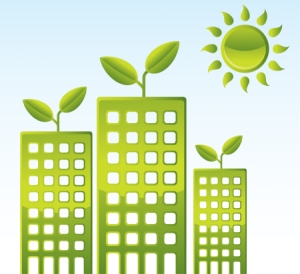 1450 Brickell has been doing a fantastic job marketing itself. Just this week, it had a wonderful article in Globest.com that describes it as the first building to earn a LEED Gold certification. However, first is a relative term. I went to the US Green Building Council’s website, then went into its directories to see if 1450 Brickell is the first. Here’s the link USGBC
1450 Brickell has been doing a fantastic job marketing itself. Just this week, it had a wonderful article in Globest.com that describes it as the first building to earn a LEED Gold certification. However, first is a relative term. I went to the US Green Building Council’s website, then went into its directories to see if 1450 Brickell is the first. Here’s the link USGBC
Actually, 1450 Brickell is not the first. It’s not the first new building, it’s not the first Gold building. But, it is the first new building on Brickell to get certified LEED Gold for its Core & Shell. Ah, that’s what they meant!
Before I launch into the Who’s Who of Green Commercial Buildings in Miami, let’s translate some of the lingo they are using.
Core & Shell was one of the most common categories for our Green winners. According to USGBC, “Core and shell covers base building elements such as structure, envelope and the HVAC system. LEED for Core & Shell is designed to be complementary to the LEED for Commercial Interiors rating system, as both rating systems establish green building criteria for developers, owners and tenants.” This means that the interior build-out (aka the tenants’ offices) could be green, but don’t have to be. It also does not address how the building is operated on a day-to-day basis. For that, we go to our next definition.
Our next definition is Existing Building Operations & Maintenance. Once again, here’s the USGBC. “LEED for Existing Buildings addresses whole-building cleaning and maintenance issues (including chemical use), recycling programs, exterior maintenance programs, and systems upgrades. It can be applied both to existing buildings seeking LEED certification for the first time and to projects previously certified under LEED for New Construction, Schools, or Core & Shell.” That’s interesting. A new building could be LEED certified in two different categories.
The final definition is LEED for New Construction. Here’s the authority, the USGBC. “The LEED for New Construction Rating System is designed to guide and distinguish high-performance commercial and institutional projects, including office buildings, high-rise residential buildings, government buildings, recreational facilities, manufacturing plants and laboratories.” Now the difference is that this rating addresses interior build-out as well. It is a tougher rating than just Core & Shell.
According to the USGBC, “LEED points are awarded on a 100-point scale, and credits are weighted to reflect their potential environmental impacts. Additionally, 10 bonus credits are available, four of which address regionally specific environmental issues. A project must satisfy all prerequisites and earn a minimum number of points to be certified. ” The rankings are Platinum, Gold, Silver and Certified and these rankings are determined by the number of points scored.
Here are the current buildings in Miami that have achieved the elite club of LEED certification. Let’s begin with the highest achievers.
1000 Waterford – LEED Gold for Core & Shell
This 250,000 sf office building was completed in the fourth quarter of 2009. It was developed by The Hogan Group and is owned by TIAA-CREF.
1450 Brickell – LEED Gold for Core & Shell
This is a beautiful 35-story, 583,000 sf office building owned by Rilea Group. It was completed this year (2010).
2121 Biscayne Staples Store – LEED Gold for Core & Shell.
This store was completed in 2008. I recall that it was the very first LEED Gold building in Miami. Staples is an industry leader in sustainability.
Royal Oaks Community Center, Miami Lakes – LEED Gold for New Construction
Building by the City of Miami Lakes, this 8,000 sf project was completed last year (2009).
Wachovia Financial Center – LEED Gold for Existing Building Operations & Maintenance
This 1.1 million sf office building is owned by a co-mingled pension fund managed by JP Morgan. It was built in 1984, so achieving a LEED Gold is a testament to its good design and excellent management. They were awarded their LEED Gold at the end of 2009.
1221 Brickell – LEED Silver for Existing Building Operations & Maintenance
This 400,000 sf office building was built in 1986. It’s design is reminiscent of the Miami Vice days, but this certification is once again testament to good management.
Miami Green – LEED Silver for Core & Shell
This 122,000 sf office condo building was completed in 2008 and is 90% vacant. Why it sits empty is for another blog entry. Suffice it to say that this building was marketed all on the hype of sustainability. One would think they would have gone for a Platinum rating.
701 Brickell – LEED Certified for Existing Building Operations & Maintenance
Another office building owned by TIAA-CREF. It’s 678,000 sf and was built in 1986. Interesting how 1221 Brickell was able to achieve a higher rating. The building is managed by the same firm, Jones Lang Lasalle. In my opinion, being Certified for a Class A office building shows that a minimum effort went into the accreditation process.
Clinical Research Building – LEED Certified for New Construction
This 336,000 sf building is owned by the University of Miami. It was completed in 2006.
The Miami Heat Goes Green – LEED Certified for Existing Building Operations & Maintenance. What’s there to say except certifying the American Airlines Arena was quite a job.
LEED Certification is about a lot of paperwork. These buildings have to prove their efficiencies and that’s done through great design and construction, monitoring the building’s systems and then hiring consultants to oversee the whole process. All of these buildings are to be commended for their efforts.
I’ll continue to write other blog entries about green buildings and sustainability. Does it all really matter? I think sustainable buildings are the future, but do they have to be LEED certified? That’s a discussion for another blog entry. I welcome your comments.


